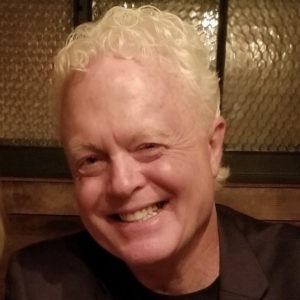One-on-one with…Shawn Bloom
The Programs of All-inclusive Care for the Elderly (or PACE, headquartered in Alexandria, Va.) serves an impressive 42,000 nursing-home eligible seniors receive clinical care and daily living support within their communities as an alternative to skilled nursing care. Utilizing a bundled payment structure, PACE’s model brings together teams of physicians, nurses, social workers and therapists to devise and implement individualized care plans to seniors in a community setting. The result? Seniors receive the medical care they require and would receive in a skilled care facility, while remaining in their own homes. PACE was founded in 1970, but became a Medicare/Medicaid-approved provider in 1997.
Shawn Bloom has been the president and CEO of the National Pace Association for 14 years. He is responsible for the association's strategic direction and operational activities. Previously,0 Bloom served as executive director of the Missouri Association of Homes for the Aging. Bloom also worked in the Policy and Governmental Affairs Department at the American Association of Homes and Services for the Aging(now, LeadingAge). He recently shared PACE’s story of success and the organization’s plans for the future with Long-Term Living.
You recently expanded to 103 programs. How did you achieve this success and what were the challenges along the way?
While the National PACE Association does everything it can to support the growth of PACE, the credit for reaching 103 programs really goes to the sponsors who have a vision to create a program that can help families and older people in their communities. Once they have that vision, then they have to do the hard work of creating a PACE organization. There are a few common challenges to getting PACE started. PACE is still not well known. So generating community support can be a challenge. Also, before we enroll the first person, the PACE organization has to invest in building the PACE center, developing a transportation system, and employing all the members of the interdisciplinary team. So there is large investment up front before the program is paid the first dollar. Currently, only not-for-profit organizations can start PACE programs and successful nonprofits look at long-term investments that provide the most benefit back to their communities.
How does the program’s model works, including provider networks, reimbursements and outreach to clients?
PACE is a different type of provider model. We are community-based providers that directly employ an integrated team of doctors, nurses, social workers and others that provide all needed medical care and long-term services and supports, including transportation, adult day care, physical and occupational therapy and even meals if needed. While care and services are delivered across settings, the team is based in a PACE center that most participants attend an average of three times a week. We are paid a set amount each month, adjusted some by the diagnoses each person has. From that amount of money we are totally responsible for that person’s healthcare from emergency room access to hospital and nursing home care. Because the program is responsible for all necessary care and services, PACE has the incentive to provide high-quality primary and preventive care and services to avoid in-patient utilization costs. In PACE, the clinical and financial incentives are perfectly aligned. Because team members are primarily responsible for providing care and services each day, they can detect and address changes in a participant’s needs very quickly. That is a key reason the program is so successful at keeping more than 90 percent of its enrollees out of nursing homes.
Who is the typical PACE client?
To enroll in PACE, a person must be 55 years old or older, certified to meet the state’s nursing home level of care, live in the PACE service area and be able to live safely in the community with the help of PACE services at the time of enrollment. Our programs enroll many types of people, however our typical enrollee is a 79-year-old woman who is living alone, has difficulty with three of more activities of daily living, and just had some type of setback that is causing her to look for increased access to services at home so that she can avoid moving to a nursing home.
How has the ACA affected PACE? How have you had to readjust?
Many of the principles and goals of the Affordable Care Act have been embraced by PACE for many years—bundled payments, fullyintegrated care, medical homes…. With an aging population and a renewed emphasis on serving those eligible for both Medicare and Medicaid, we see tremendous potential for growth. PACE is a complement to health plans because the model is able to integrate not only different funding streams but also, more importantly, completely integrate the delivery of care and services. From the participant’s perspective and those providing the care, the focus is on what is best for the care of person, not what is covered by Medicare, Medicaid or insurance.
What’s next for PACE?
We think the principles that make PACE a successful model for older adults who need access to care and services would also make it a successful model for serving other populations with similar levels of needs: for example, younger adults with physical or intellectual disabilities or people with multiple chronic health needs. As states look to enroll more, if not all, of their Medicaid-eligible individuals into managed care plans, having a managed care option with a fully integrated network of caregivers like PACE is very attractive to them. We hope that as PACE grows, more people will become aware of the type of care PACE provides and will work to have it available in their community.
Related Articles
Topics: Articles , Executive Leadership











